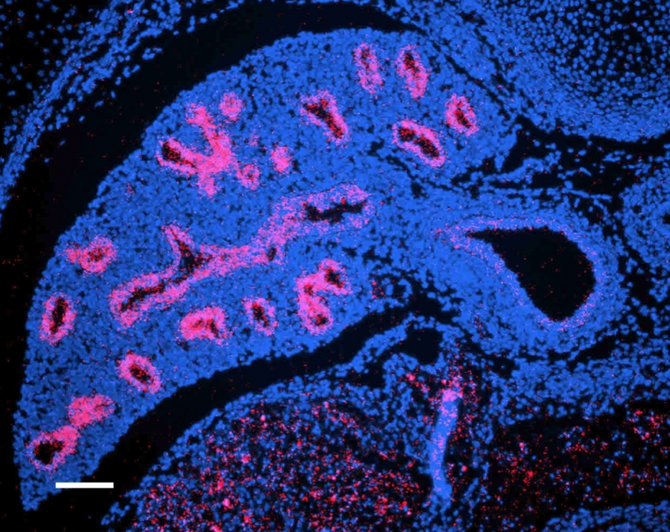Penn Study: Genomic "Dark Matter" of Embryonic Lungs Controls Proper Development of Airways
It’s a long way from DNA to RNA to protein, and only about two percent of a person’s genome is eventually converted into proteins. In contrast, a much higher percentage of the genome is transcribed into RNA. What these non-protein-coding RNAs do is still relatively unknown. However, given their vast numbers in the human genome, researchers believe that they likely play important roles in normal human development and response to disease.
Large-scale sequencing has allowed investigators to identify thousands of non-coding RNAs. Small non-coding RNAs, including microRNAs, are known to be important players in regulating gene expression in many contexts, including tissue development. On the other hand, the function of long non-coding RNAs (lncRNAs) is less well understood.
Research led by Ed Morrisey, PhD, professor of Medicine and Cell and Developmental Biology in the Perelman School of Medicine, University of Pennsylvania and scientific director of the Penn Institute for Regenerative Medicine, has identified hundreds of these lncRNAs, sometimes called the “genomic dark matter,” that are expressed in developing and adult lungs. Their findings, described in and featured on the cover of the current issue of Genes and Development, reveal that many of these lncRNAs in the lung regulate gene expression by opening and closing the DNA scaffolding on neighboring genes.
The team identified 363 long non-coding RNAs in the lung of the embryonic and adult mouse. They show that these lncRNAs are often located near transcription factors in the genome of lung cell lineages. “We have defined a new association of long non-coding RNAs with proteins called transcription factors that bind to specific DNA sequences and control cell identity and function,” Morrisey says. “This association is important for lung development in mouse embryos, and at least for one of these long non-coding RNAs, important for human lung function.”
Critical Pathways for Development, Disease
The team identified a lncRNA, called NANCI, that regulates the critical transcription factor Nkx2.1. This factor is the first lung molecular marker during mouse and human development and is essential for lungs to mature properly in an embryo.
NANCI appears to act upstream of Nkx2.1, but down-stream of Wnt signaling, a critical pathway for specifying cell type later in lung tissue development. Knockdown of NANCI expression during lung development leads to decreased Nkx2.1 expression and mimics the defects due to loss of a single copy of the Nkx2.1 gene, including decreased expression of surfactant proteins. These proteins aid in marking bacteria invading the lung for destruction by the immune system.
Importantly, patients with mutations in a single copy of NKX2.1 often have Brain-Lung-Thyroid Syndrome, which is characterized by respiratory distress after birth and accompanied by decreased surfactant protein expression. “There is also a report of a patient with a deletion in NANCI but not NKX2.1 who has Brain-Lung-Thyroid Syndrome, suggesting that mutations in NANCI and other lncRNAs can underlie human diseases,” explains Morrisey.
Click here to view the full release.








